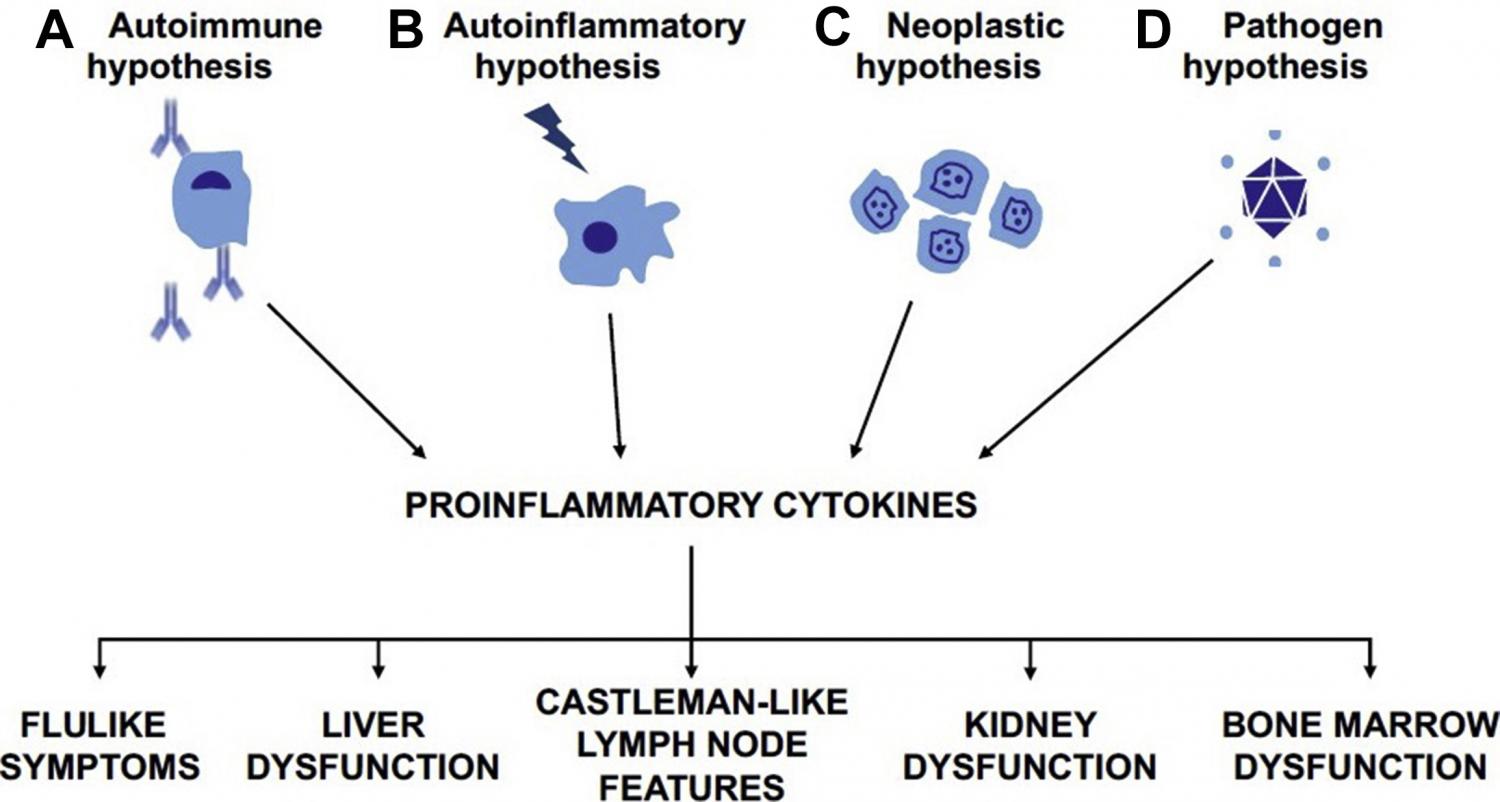
Castleman disease (CD) is subclassified based on the number of enlarged lymph nodes, Kaposi sarcoma–associated herpesvirus/human herpesvirus-8 (HHV-8) infection status, and clinical presentation.
The pathogenesis of unicentric CD (adenopathy of a single region of lymph nodes) is most likely driven by a neoplastic follicular dendritic cell population.
HHV-8–associated multicentric CD (adenopathy of multiple regions of lymph nodes) pathogenesis is virally driven, whereas polyneuropathy, organomegaly, endocrinopathy, monoclonal plasma cell disorder, and skin changes (POEMS)–associated multicentric CD (MCD) pathogenesis is driven by a monoclonal plasma cell population.
Idiopathic MCD is poorly understood, although clinical data suggest a pathologic role for interleukin-6 in a subset of patients.
